1. Early life and background
Christopher Lee's early life was marked by a distinguished family background and formative educational experiences across Europe.
1.1. Childhood and education
Born on 27 May 1922 in Belgravia, London, Christopher Frank Carandini Lee was the son of Lieutenant Colonel Geoffrey Trollope Lee and Countess Estelle Marie. His parents separated when he was four and divorced two years later. During this period, his mother took him and his elder sister, Xandra Carandini Lee (1917-2002), to Wengen, Switzerland. There, he attended Miss Fisher's Academy in Territet, where he made his first stage appearance playing Rumpelstiltskin.
Upon their return to London, Lee enrolled in Wagner's private school in Queen's Gate. At nine, he was sent to Summer Fields School, a preparatory school in Oxford, where he continued to participate in school plays, though he noted that the acting "laurels deservedly went to Patrick Macnee". He applied for a scholarship to Eton College, where his interview was conducted in the presence of the ghost story author M.R. James. Due to his poor mathematics skills, he missed a King's Scholar place by one spot. His stepfather, Harcourt George St-Croix Rose, was unwilling to pay the higher fees required for an Oppidan Scholar, leading Lee to attend Wellington College instead. At Wellington, he earned scholarships in the classics, studying Ancient Greek and Latin. Despite a "tiny part" in a school play, he did not actively pursue acting at Wellington. He was a proficient racquets player and fencer, and a competent cricketer, but disliked the military training, often "playing dead" during mock battles. Lee frequently received corporal punishment, which he accepted as "logical and therefore acceptable" for breaking rules. His time at Wellington ended in the summer of 1939, at age 17, when his stepfather declared bankruptcy, owing 25.00 K 1939.
With his mother having separated from Rose, Lee needed to find work. He traveled to the French Riviera, stopping briefly in Paris, where he witnessed the last public execution by guillotine in France, that of Eugen Weidmann. In Menton, he stayed with the Russian Mazirov family, living among exiled princely families. However, with Europe on the brink of World War II, he returned to London and secured a job as an office clerk for United States Lines, handling mail and running errands. In early 1940, he joined Beecham's as an office clerk and later a switchboard operator. When Beecham's relocated outside London, he joined the Home Guard.
1.2. Family and lineage
Christopher Lee's family boasted a distinguished lineage. His father, Lieutenant Colonel Geoffrey Trollope Lee (1879-1941), served in the 60th King's Royal Rifle Corps and fought in both the Second Boer War and First World War. His mother, Countess Estelle Marie (née Carandini di Sarzano; 1889-1981), was an Edwardian beauty whose portraits were painted by notable artists such as Sir John Lavery, Oswald Birley, and Olive Snell, and sculpted by Clare Sheridan.
Lee's maternal great-grandfather, Jerome Carandini, the Marquis of Sarzano, was an Italian political refugee. His great-grandmother, Marie Carandini (née Burgess), was an English-born opera singer, highlighting a history of performers in his family. The Carandini family is one of the oldest in Europe, tracing its origins back to the first century AD and believed to be connected with Charlemagne. They were granted the right to bear the coat of arms of the Holy Roman Empire by Emperor Frederick Barbarossa.
Following his parents' divorce, his mother married Harcourt George St-Croix Rose, a banker and uncle of Ian Fleming, the author of the James Bond novels. This made Fleming Lee's step-cousin. The family resided in Fulham, next door to actor Eric Maturin. It was through this connection that Lee was introduced to Prince Yusupov and Grand Duke Dmitri Pavlovich, the assassins of Grigori Rasputin, a role Lee would famously play many years later. Lee was also the uncle of British actress Harriet Walter.
2. Military service
Christopher Lee served with the British Armed Forces during World War II. While much of his wartime involvement is based on his own accounts, particularly from his 2003 autobiography, certain aspects have been questioned by historians posthumously.
2.1. World War II service
When World War II began in 1939, Christopher Lee, then a military academy enrollee, volunteered to fight for the Finnish Army against the Soviet Union during the Winter War. He and other British volunteers were kept away from the actual fighting, posted on guard duty a safe distance from the border, and returned home after two weeks in Finland. Lee later remarked that he knew how to shoot but not how to ski, suggesting he might not have survived if he had been sent to the front line.
After his brief service in Finland, Lee returned to his clerical job at United States Lines, feeling he was making a meaningful contribution. In early 1940, he joined Beecham's, first as an office clerk, then as a switchboard operator. He then joined the Home Guard. Following his father's death from bilateral pneumonia in March 1941, Lee, disinclined to follow his father into the Army, volunteered for the Royal Air Force.
Lee began his RAF training at RAF Uxbridge and was posted to the Initial Training Wing at Paignton. After passing his exams in Liverpool, he traveled to South Africa under the British Commonwealth Air Training Plan, posted to Hillside, Bulawayo in Southern Rhodesia. While training with de Havilland Tiger Moths, Lee suffered from headaches and blurred vision during his penultimate training session before his first solo flight. He was diagnosed with an optic nerve failure, which permanently grounded him from flying. Devastated, his appeals were unsuccessful, leaving him without a clear role. He was moved between flying stations before being posted to Salisbury, Southern Rhodesia, in December 1941. He visited local landmarks, including the Mazowe Dam, Marandellas, the Wankie Game Reserve, and the ruins of Great Zimbabwe. Seeking to contribute, he applied to join RAF Intelligence, was seconded to the British South Africa Police, and served as a warder at Salisbury Prison before being promoted to leading aircraftman. He then sailed from Durban to Suez on the Nieuw Amsterdam.
In 1942, after a period at RAF Kasfareet near the Great Bitter Lake in the Suez Canal Zone, Lee resumed intelligence work in Ismaïlia. He was attached to No. 205 Group RAF before being commissioned in January 1943 and attached to No. 260 Squadron RAF as an intelligence officer. As the North African Campaign progressed, his squadron moved through Egyptian airstrips, providing air support and bombing strategic targets. Lee was expected to be knowledgeable about all aspects of the operations. The Allied advance continued through Libya and into Tunisia, where Lee narrowly escaped death during an airfield bombing near the Mareth Line. After the Mareth Line was breached, the squadron established its final base in Kairouan. Following the Axis surrender in North Africa in May 1943, the squadron moved to Zuwarah in Libya, preparing for the Allied invasion of Sicily. They then moved to Malta and, after its capture, to the Sicilian town of Pachino, before establishing a permanent base in Agnone Bagni. In late July 1943, Lee was promoted to flying officer. After the Sicilian campaign, Lee contracted malaria for the sixth time in less than a year and was treated in Carthage. Upon his return, he successfully de-escalated a potential mutiny among his squadron, impressing his commanding officer with his knowledge of Russia.
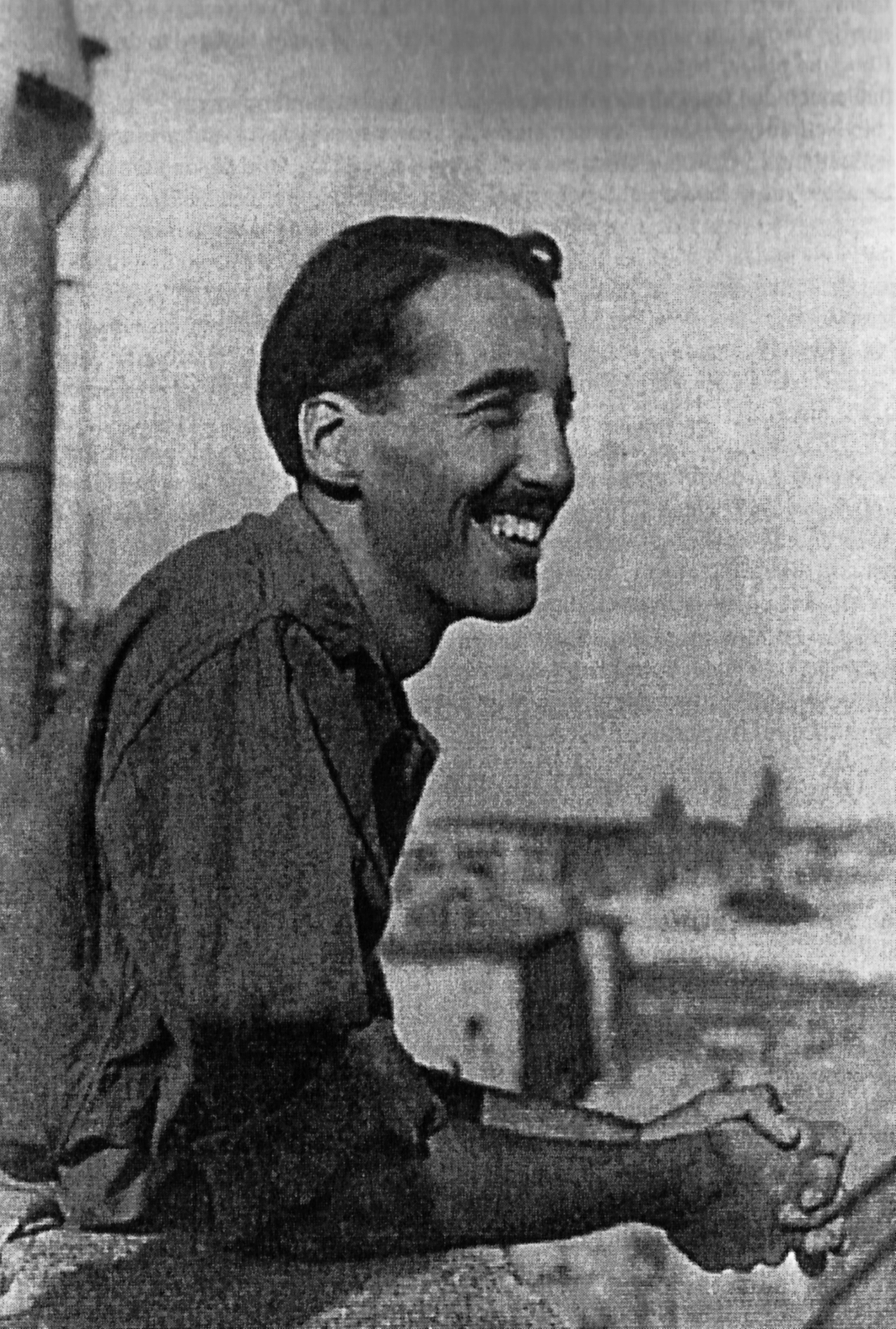
During the Allied invasion of Italy, Lee's squadron was based in Foggia and Termoli in the winter of 1943. Lee was seconded to the Army during an officers' swap scheme and spent most of the Battle of Monte Cassino attached to the Gurkhas of the 8th Indian Infantry Division. While on leave in Naples, he climbed Mount Vesuvius, which erupted three days later. During the final assault on Monte Cassino, Lee was almost killed when a plane crashed on takeoff, and he tripped over a live bomb. After the battle, the squadron moved near Rome, where Lee visited the city and met his mother's cousin, Nicolò Carandini, who had fought in the Italian resistance movement. In November 1944, Lee was promoted to flight lieutenant and transferred to Air Force HQ in Iesi for forward planning and liaison, preparing for a potential assault into the rumored German Alpine Fortress. After the war, Lee went hunting near Vienna and was billeted in Pörtschach am Wörthersee. For his final months of service, Lee, fluent in French, Italian, and German, was seconded to the Central Registry of War Criminals and Security Suspects, tasked with tracking down Nazi war criminals. He stated, "We were given dossiers of what they'd done and told to find them, interrogate them as much as we could and hand them over to the appropriate authority." He was discharged from the RAF in 1946 with the rank of flight lieutenant. Lee claimed he was attached to special forces during the war but declined to give details.
2.2. Posthumous allegations of embellishment
Since his death, some historians and academics have accused Christopher Lee of exaggerating or being intentionally misleading about the details of his wartime service. Historian Gavin Mortimer stated that Lee "hammed up" details of his service, suggesting he "never exactly lied about his creditable wartime record, but he encouraged its embellishment." Leanne Simpson of Bangor University also commented that Lee "famously encouraged the embellishment of his two-year military service during World War II." She noted that while many believed he served in elite British military units like the SAS, he was in truth only attached as an RAF liaison officer. Simpson concluded that "Though Lee never hid this fact, he failed to clarify his role and allowed false assumptions to be circulated."
3. Career
Christopher Lee's professional life was extensive and multifaceted, encompassing acting, music, and writing, with his career evolving through distinct periods and significant projects.
3.1. Early career and beginnings (1947-1957)
Returning to London in 1946, Christopher Lee declined an offer to return to his old job at Beecham's, feeling he could not readjust to office work. He also dismissed the idea of teaching classics at universities, finding his Latin too rusty and disliking strict curfews. His entry into acting came during a lunch with his mother's cousin, Nicolò Carandini, then the Italian Ambassador to Britain. Upon hearing Lee recount his war wounds, Carandini suggested, "Why don't you become an actor, Christopher?" Lee was receptive to the idea and, after assuring his mother by pointing to successful performers in the Carandini family (including his great-grandmother, opera singer Marie Carandini), he met Nicolò's friend Filippo Del Giudice, a lawyer-turned-film producer and head of Two Cities Films, part of the Rank Organisation. Del Giudice reportedly "concluded that I was just what the industry had been looking for."
Lee was sent to see Josef Somlo for a contract. Somlo initially told him he was "too tall to be an actor," a remark Lee found "fatuous," resolving to prove him wrong. He acknowledged his initial lack of camera technique but spent 10 years observing, listening, and learning, preparing himself for future roles. He was signed to a seven-year contract by Rank's David Henley and Olive Dodds. Like other students at Rank's "Charm School," Lee struggled to find work initially.
His film debut came in 1948 in Terence Young's Gothic romance Corridor of Mirrors, where he played Charles. The director accommodated his height by seating him at a nightclub table. Lee had only one line in the film. In this early period, he made an uncredited appearance as a spear carrier in Laurence Olivier's film version of Hamlet (1948), where his future close friend and frequent co-star Peter Cushing played Osric. A few years later, he appeared in Captain Horatio Hornblower R.N. (1951) as a Spanish captain, a role he secured by confirming his ability to speak Spanish and fence. Lee also had an uncredited role as a chariot driver in the American epic Quo Vadis (1951), filmed in Rome, where he was injured after being thrown from a chariot during the shoot.
Lee considered his breakthrough to be in 1952 when Douglas Fairbanks, Jr. began making films at the British National Studios. He was cast in 16 of these films, even appearing with Buster Keaton, which he described as "an excellent training ground." The same year, he appeared in John Huston's Oscar-nominated Moulin Rouge. Over the next decade, Lee appeared in nearly 30 films, often playing stock action characters, before his iconic roles began to emerge.
3.2. Hammer Film era (1957-1976)
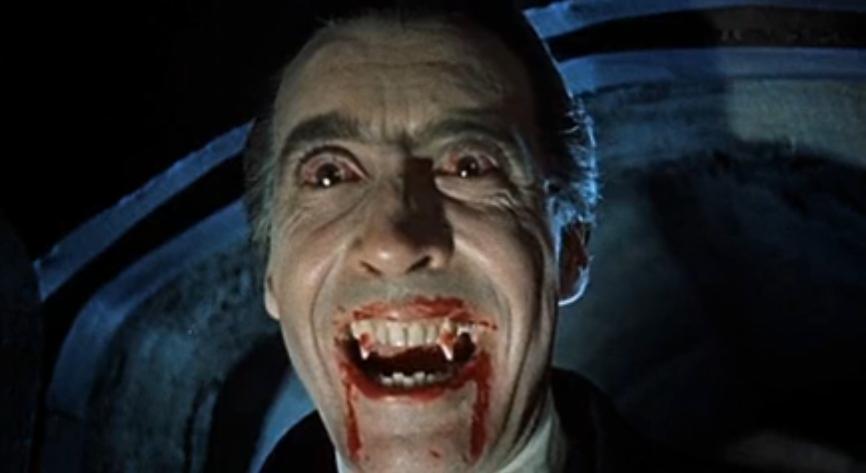
Christopher Lee's first film for Hammer was The Curse of Frankenstein (1957), where he played Frankenstein's monster opposite Peter Cushing as Baron Victor Frankenstein. This marked the first collaboration between Lee and Cushing, who would go on to appear in over twenty films together and become close friends. Lee recalled simply being asked if he wanted the part and accepting it. Shortly after, Lee co-starred with Boris Karloff in Corridors of Blood (1958), having previously appeared with Karloff in a 1955 television episode of Colonel March of Scotland Yard.
Lee's portrayal of Frankenstein's monster led to his iconic role as the Transylvanian vampire Count Dracula in Hammer's Dracula (1958, known as Horror of Dracula in the US). This "triumphant debut" cemented the image of the fanged vampire in popular culture. Dracula is widely regarded as one of the best British films. Lee introduced a dark, brooding sexuality to the character, with Tim Stanley noting, "Lee's sensuality was subversive in that it hinted that women might quite like having their neck chewed on by a stud." Empire magazine ranked Lee's Dracula as the 7th Greatest Horror Movie Character of All Time, while CNN listed his performance third in their top 10 British villains, praising his "chilling, sonorous tone." Lee subsequently took on a similar role in the Italian-French horror film Uncle Was a Vampire (1959) and starred as Kharis in Hammer's The Mummy (1959).
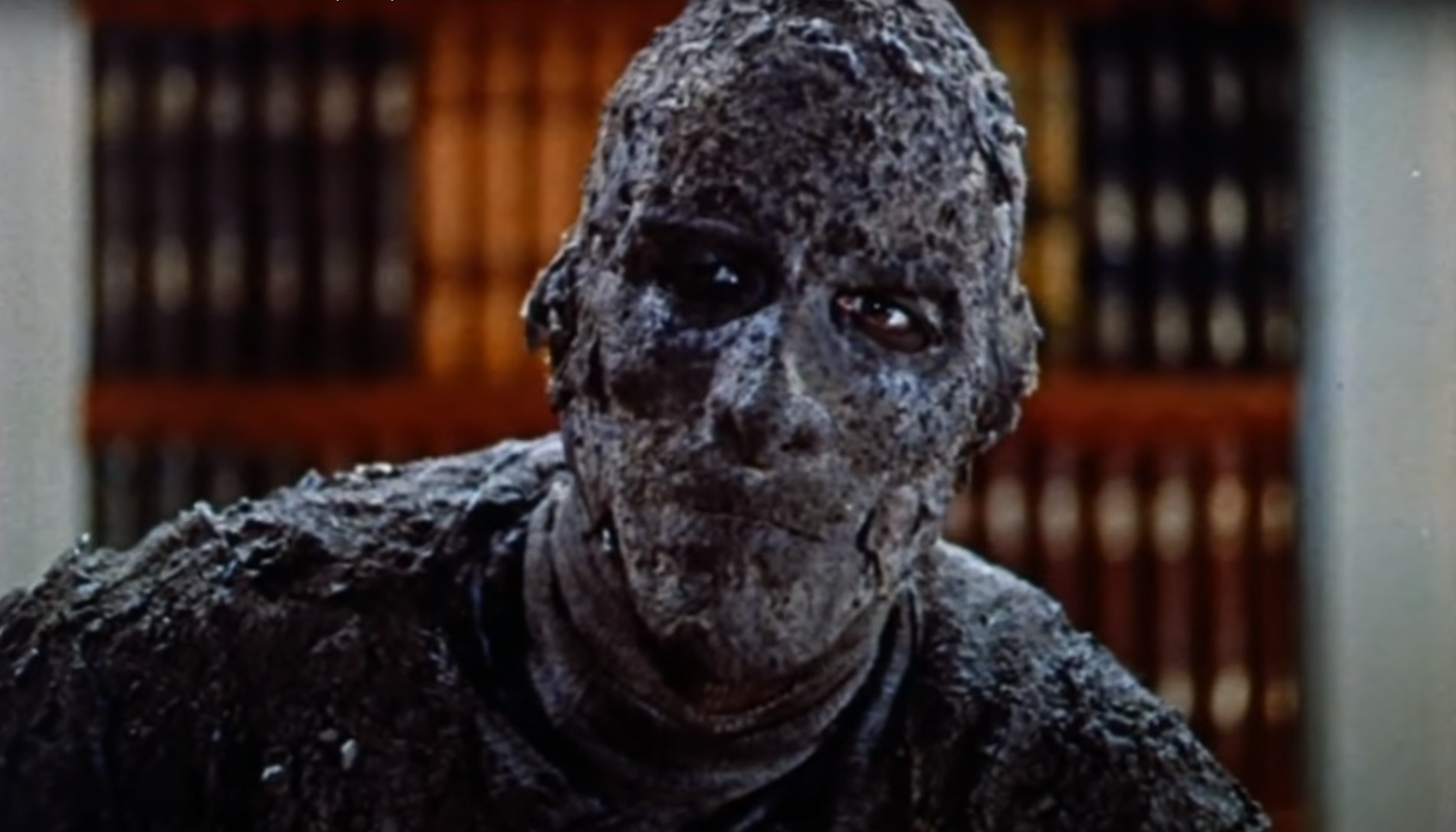
Lee returned to the role of Dracula in Hammer's Dracula: Prince of Darkness (1965), though his character had no lines, communicating only through hisses. Lee claimed he refused to speak the poor dialogue, while screenwriter Jimmy Sangster stated the script contained no lines for Dracula. This film established a pattern for subsequent Dracula sequels, where the Count's appearances were brief, and much of the runtime focused on his resurrection. Lee stated he was "blackmailed" into continuing the role, with Hammer reminding him of the jobs at stake if he declined. His roles in Dracula Has Risen from the Grave (1968), Taste the Blood of Dracula (1969), and Scars of Dracula (1970) offered the character little to do. Lee lamented that the scripts merely tried to fit Dracula into a story, often without giving him meaningful dialogue. He continued to star in two more Dracula films for Hammer in the early 1970s, Dracula A.D. 1972 (1972) and The Satanic Rites of Dracula (1973), both attempting to bring the character into the modern era. These were not commercially successful. Lee expressed his dissatisfaction with The Satanic Rites of Dracula, calling it "fatuous" and "pointless," and it was his last time playing Dracula for Hammer, as he felt the films had deteriorated.
In total, Lee played Dracula ten times: seven for Hammer, once for Jesús Franco's Count Dracula (1970), uncredited in Jerry Lewis's One More Time (1970), and Édouard Molinaro's Dracula and Son (1976). He also played an unnamed vampire in The Magic Christian (1969). Beyond Dracula, Lee portrayed Rasputin in Rasputin, the Mad Monk (1966) and Sir Henry Baskerville (opposite Cushing's Sherlock Holmes) in The Hound of the Baskervilles (1959). Lee later played Holmes himself in Sherlock Holmes and the Deadly Necklace (1962) and returned to the Holmes universe as Sherlock's smarter brother, Mycroft, in Billy Wilder's The Private Life of Sherlock Holmes (1970). Lee credited this film with helping him break free from typecasting. He also starred in the German film The Puzzle of the Red Orchid (1962), speaking German, which he had learned in Switzerland. He was incorrectly credited in some film books for a role in The Longest Day (1962), a claim he spent years correcting.
Lee's friend, author Dennis Wheatley, introduced him to the occult. Hammer adapted two of Wheatley's novels, both starring Lee. The Devil Rides Out (1967) earned praise for Lee's "suave dignity" from The New York Times. However, To the Devil a Daughter (1976) was plagued by production issues and disowned by Wheatley. Despite its financial success, it was Hammer's last horror film.
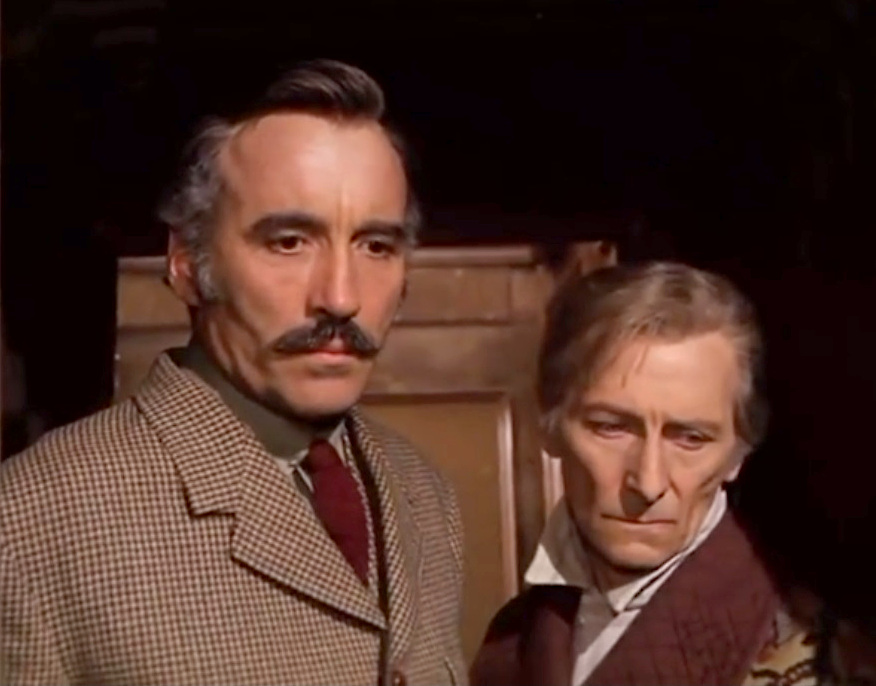
Lee also appeared in horror films for other companies between 1957 and 1977. This included the Dr. Fu Manchu film series (1965-1969), starting with The Face of Fu Manchu, where he controversially starred as the villain in yellowface make-up. Other notable roles included I, Monster (1971), an adaptation of Strange Case of Dr Jekyll and Mr Hyde; The Creeping Flesh (1972); and his personal favorite, The Wicker Man (1973), in which he played Lord Summerisle. Lee sought to break free from his Dracula image and pursue more diverse roles. He collaborated with screenwriter Anthony Shaffer, director Robin Hardy, and British Lion head Peter Snell to create The Wicker Man, a horror film contrasting with popular Hammer productions. Shaffer adapted David Pinner's novel Ritual, paying Pinner 15.00 K 1971 for the rights. Lee was so committed to the project's small budget that he offered his services for free, later calling it his best film.
Lee appeared as the on-screen narrator in Jess Franco's Eugenie (1970) as a favor to producer Harry Alan Towers, unaware that the film contained explicit sex scenes shot separately. He expressed fury upon discovering the film's nature.
In addition to UK productions, Lee made films in mainland Europe, including the German films Count Dracula (1970) and The Torture Chamber of Dr. Sadism (1967), and others like Castle of the Living Dead (1964) and Horror Express (1972). Lee also produced and starred in the horror film Nothing But the Night (1972), his first and last producing venture, as he disliked the process.
Lee appeared as the Comte de Rochefort in Richard Lester's The Three Musketeers (1973), injuring his left knee during filming. After the mid-1970s, Lee largely avoided horror roles. Ian Fleming, Lee's step-cousin and author of the James Bond novels, had initially offered him the role of Dr. No in the first Eon-produced Bond film Dr. No (1962), but Joseph Wiseman was cast instead. Lee finally played a James Bond villain as the assassin Francisco Scaramanga in The Man with the Golden Gun (1974). He described his portrayal as "the dark side of Bond," making Scaramanga charming, elegant, and lethal, a departure from Fleming's original depiction of him as a "West Indian thug."
Film director Ken Russell was unable to cast Lee as the Specialist in Tommy (1975) due to Lee's filming schedule in Bangkok; the role went to Jack Nicholson. John Carpenter offered Lee the role of Samuel Loomis in Halloween (1978) before Donald Pleasence took it. Lee later told Carpenter that declining the role of Dr. Loomis was his biggest career regret.
3.3. Move to Hollywood and mid-career (1977-1999)
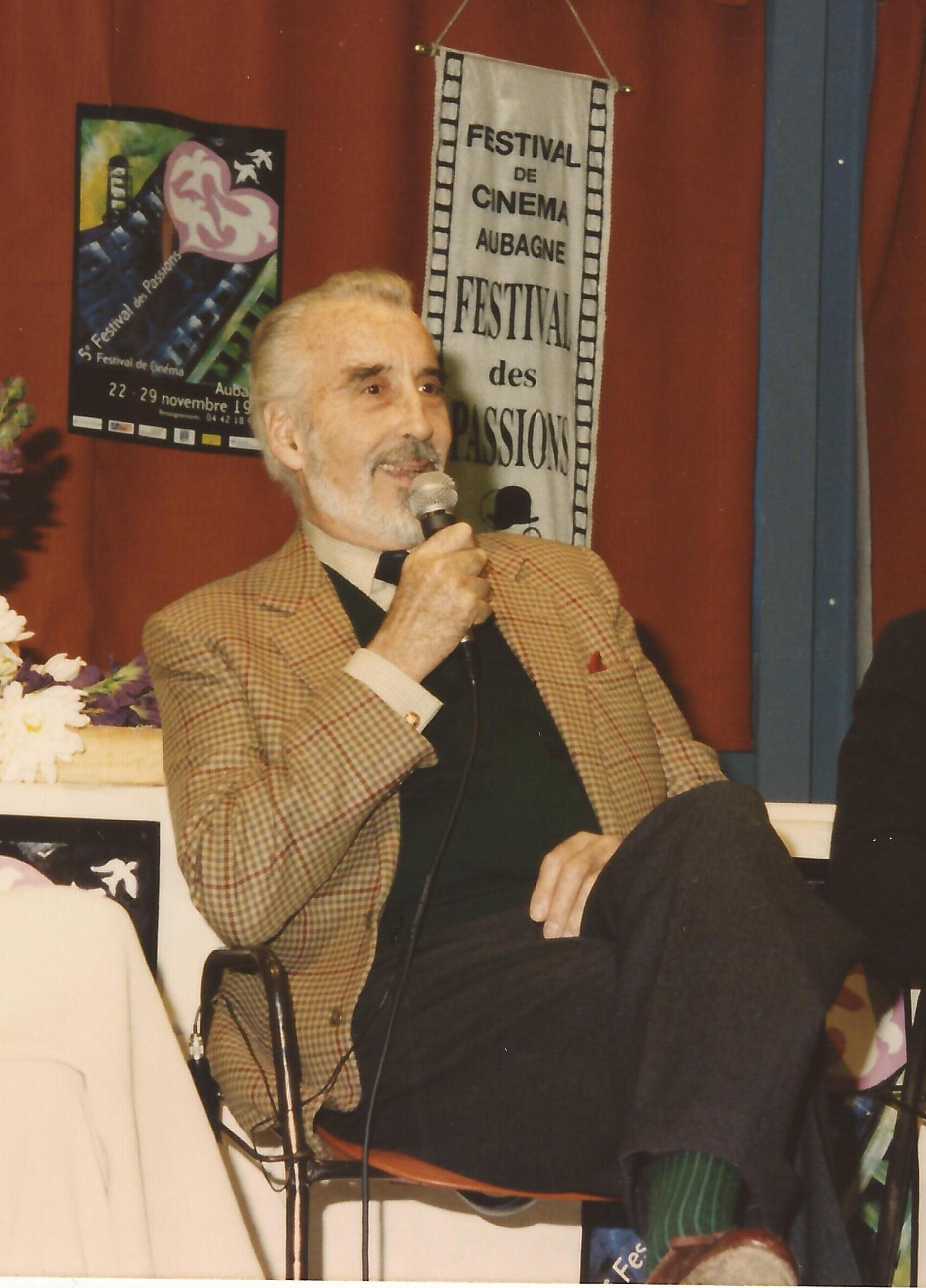
In 1977, Christopher Lee relocated from the UK to the US, seeking to escape typecasting in horror films, a fate he observed in his friends Peter Cushing and Vincent Price. His first American film appearance was in the disaster film Airport '77 (1977). In 1978, Lee surprised audiences by guest-hosting NBC's Saturday Night Live. Steven Spielberg, who was in the audience, subsequently cast him in 1941 (1979). During this period, Lee also co-starred with Bette Davis in the Disney film Return from Witch Mountain (1978). He turned down the role of Dr. Barry Rumack in the disaster spoof Airplane! (1980), a decision he later called "a big mistake."
Lee played the mad scientist Dr. Catheter in Gremlins 2: The New Batch (1990). In a nod to his iconic Dracula role, the film included a moment where, as the Bat Gremlin transforms, Dr. Catheter experiences a sense of déjà vu, accompanied by Dracula's musical theme. Lee made his final appearances as Sherlock Holmes in the television films Incident at Victoria Falls (1991) and Sherlock Holmes and the Leading Lady (1992).
Lee and Peter Cushing appeared together in over a dozen feature films for Hammer Films, Amicus Productions, and other companies. They also had roles in Hamlet (1948) and Moulin Rouge (1952), though in separate scenes. Notably, they both featured in the Star Wars films, albeit decades apart: Cushing as Grand Moff Tarkin in the original film, and Lee as Count Dooku in the prequels. Their last joint project was the 1994 documentary Flesh and Blood: The Hammer Heritage of Horror, which they jointly narrated two months before Cushing's death.
Lee considered his best performance during this period to be his portrayal of Pakistan's founder Muhammad Ali Jinnah in the 1998 biopic Jinnah.
3.4. Resurgence in franchise films (2000-2009)
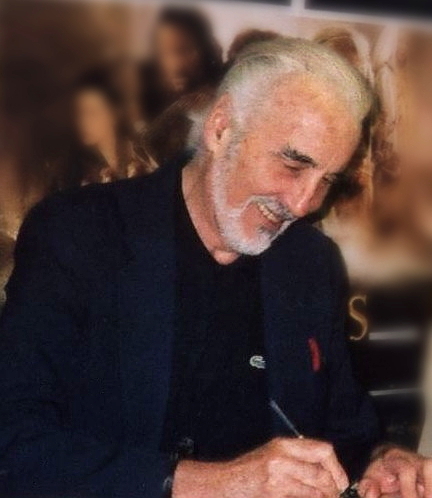
Christopher Lee experienced a significant career resurgence in the 2000s, primarily through his roles in major franchise films. Before this, he had numerous television roles, including Flay in the BBC miniseries Gormenghast (2000), based on Mervyn Peake's novels. He also appeared as Lucas de Beaumanoir, the Grand Master of the Knights Templar, in the 1997 BBC/A&E co-production of Sir Walter Scott's Ivanhoe.
Lee portrayed Saruman in Peter Jackson's fantasy action epic The Lord of the Rings film trilogy. He had long desired to play Gandalf but acknowledged he was too old, a role ultimately taken by Ian McKellen. Saruman's role, unlike Gandalf's, required no horse riding and less fighting. Lee was the only person involved in Peter Jackson's films to have met J. R. R. Tolkien, and he made a habit of reading Tolkien's novels at least once a year. In 2003, he also performed for The Tolkien Ensemble's album At Dawn in Rivendell. Lee's appearance in the final film of the trilogy, The Lord of the Rings: The Return of the King, was cut from the theatrical release but reinstated in the extended edition.

This revival continued with his role as the villainous Count Dooku in George Lucas's Star Wars: Episode II - Attack of the Clones (2002) and Star Wars: Episode III - Revenge of the Sith (2005). Lee acted opposite Hayden Christensen, Ewan McGregor, and Natalie Portman, performing most of his own swordplay, with a stunt double used for more vigorous footwork in long shots. He noted that while he was a wizard in The Lord of the Rings, in Star Wars, everything was a world of "magic power," and he was merely a part of it. He expressed great enjoyment in participating in the Star Wars films, recognizing their significant impact on cinema. The name Dooku, he noted in his autobiography, was derived from the Japanese word for "poison."
In 2005, Lee collaborated with Tim Burton on two films: he played Dr. Wonka, father of Willy Wonka, in the film adaptation of Charlie and the Chocolate Factory, and voiced Pastor Galswells in the animated film Corpse Bride. He worked with Burton again on Sweeney Todd: The Demon Barber of Fleet Street (2007), playing the Gentleman Ghost, a spirit of Sweeney Todd's victims, and singing "The Ballad of Sweeney Todd." Though recorded, his songs and appearance were cut as Burton felt them too theatrical. Also in 2007, he played the First High Councillor in The Golden Compass. In late 2009, Lee narrated the Science Fiction Festival in Trieste, Italy. That same year, he starred in Stephen Poliakoff's British period drama Glorious 39, Danis Tanović's war film Triage, and Duncan Ward's comedy Boogie Woogie.
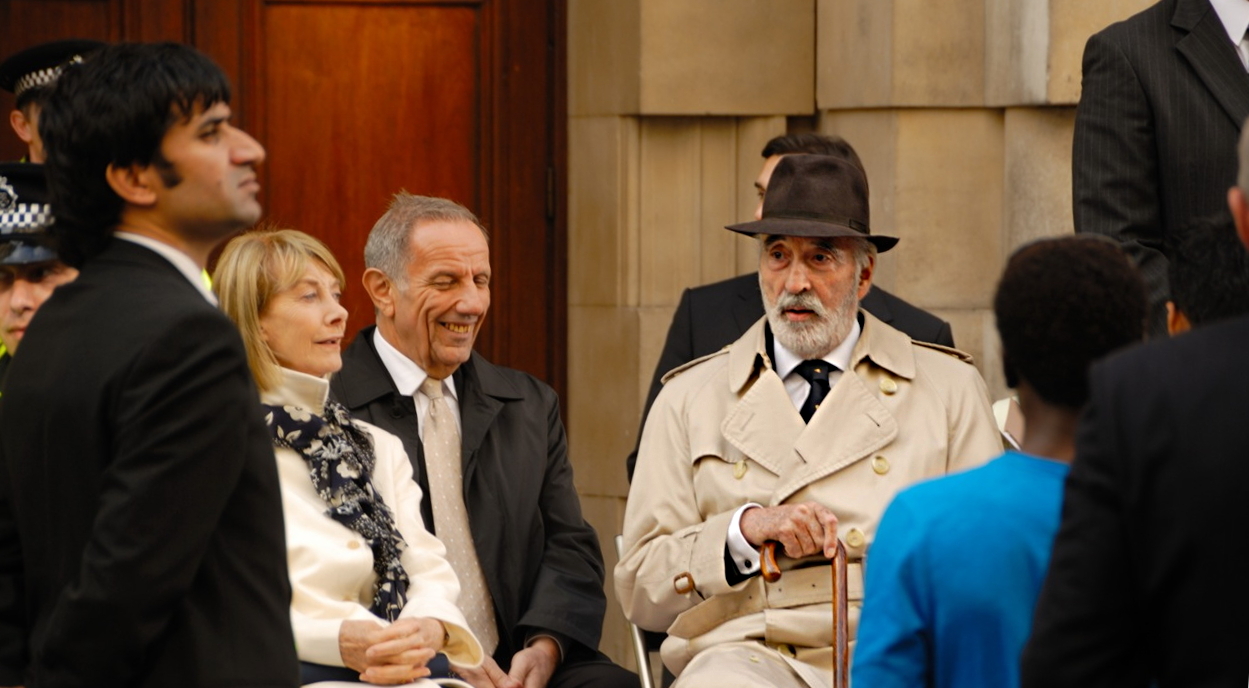
During this decade, Lee provided voices for numerous films and video games. He was fluent in English, Italian, French, Spanish, and German, and moderately proficient in Swedish, Russian, and Greek. He was the original voice of Thor in the German dubs of the 1986 Danish animated film Valhalla, and of King Haggard in both English and German dubs of the 1982 animated adaptation of The Last Unicorn. He provided all voices for the English dub of Monsieur Hulot's Holiday (1953). He voiced Death in the animated versions of Terry Pratchett's Soul Music and Wyrd Sisters, and reprised the role in the Sky1 live-action adaptation The Colour of Magic. He also voiced Ansem the Wise/DiZ in video games like Kingdom Hearts II.
Lee reprised his role as Saruman in the video game The Lord of the Rings: The Battle for Middle-earth. He narrated and sang for the Danish musical group The Tolkien Ensemble's 2003 studio album At Dawn in Rivendell, taking on roles such as Treebeard and King Théoden in readings or songs. In 2007, he voiced the audiobook version of J. R. R. Tolkien's The Children of Húrin. In 2005, he voiced Pastor Galswells in The Corpse Bride, co-directed by Tim Burton and Mike Johnson. He also served as the narrator for Tim Burton's The Nightmare Before Christmas poem. Lee reprised his role as Count Dooku in the animated film Star Wars: The Clone Wars (2008).
Approximately thirty years after playing Francisco Scaramanga in The Man with the Golden Gun, Lee provided the voice of Scaramanga in the video game GoldenEye: Rogue Agent. In 2013, Lee voiced The Earl of Earl's Court in the BBC Radio 4 radio play Neverwhere by Neil Gaiman. He recorded special dialogue and served as narrator for the Lego The Hobbit video game, released in April 2014. At 91 years and 316 days old, this earned him a place in the Guinness Book of Records as the oldest video game narrator.
3.5. Later roles (2010-2015)
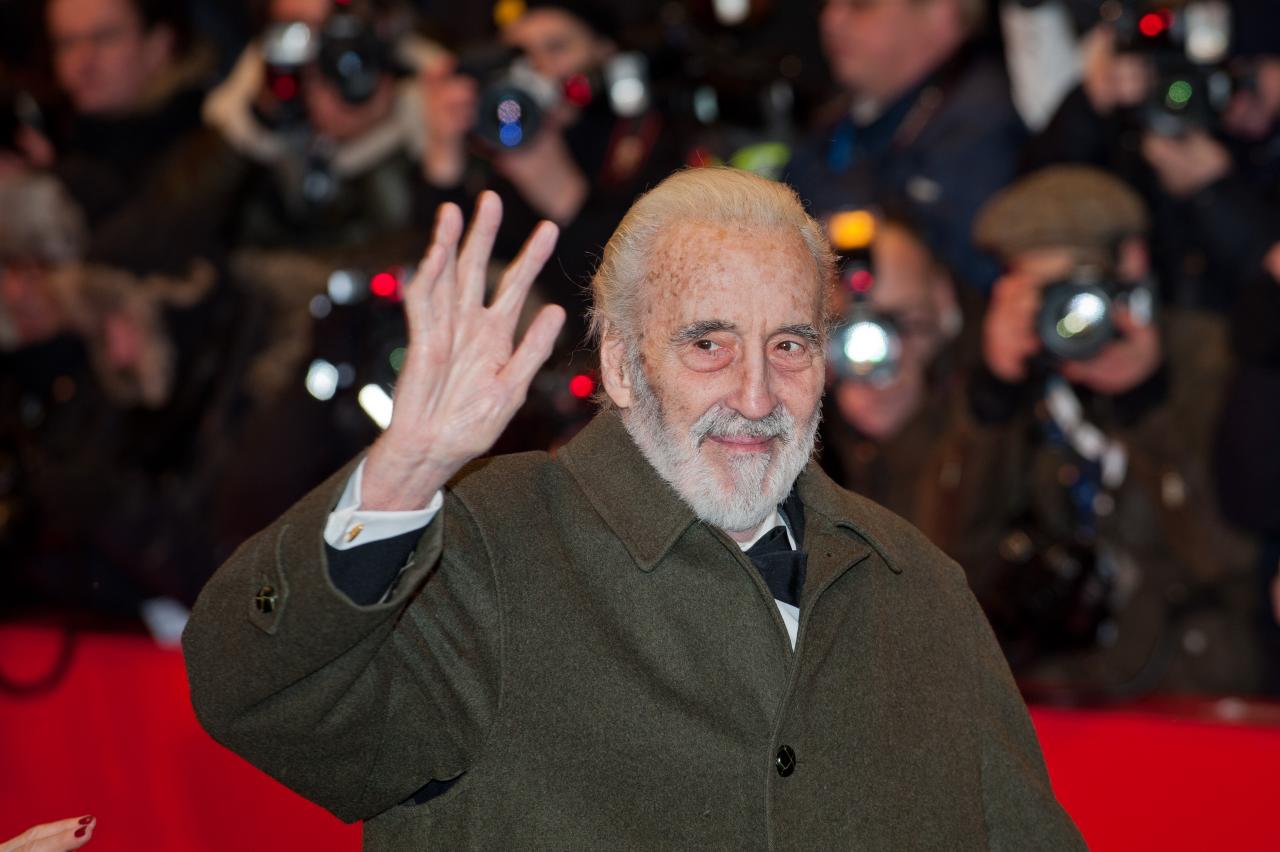
In 2004, Christopher Lee expressed lament that Hollywood scripts were predominantly spin-offs, indicating a reluctance to take financial risks, and noted that he was primarily offered roles related to Lord of the Rings or Star Wars. In 2010, he marked his fourth collaboration with Tim Burton by voicing the Jabberwock in Burton's adaptation of Lewis Carroll's classic book Alice in Wonderland, alongside Johnny Depp, Helena Bonham Carter, and Anne Hathaway. Lee held Depp in high regard, calling him "a fellow survivor" and praising his "inventive and enormous versatility." In 2010, Lee received the Steiger Award in Germany, and in February 2011, he was honored with the BAFTA Fellowship.
In 2011, Lee appeared in a Hammer film, The Resident, for the first time in 35 years. Directed by Antti Jokinen, the film featured Lee in a "superbly sinister" performance alongside Hilary Swank and Jeffrey Dean Morgan. While filming in New Mexico in early 2009, Lee injured his back after tripping over power cables on set. In The Resident, Lee appeared as the unnamed "Old Gentleman" who serves as Lachlan's mentor in a flashback. Also in 2011, Lee appeared in the critically acclaimed Hugo, directed by Martin Scorsese.
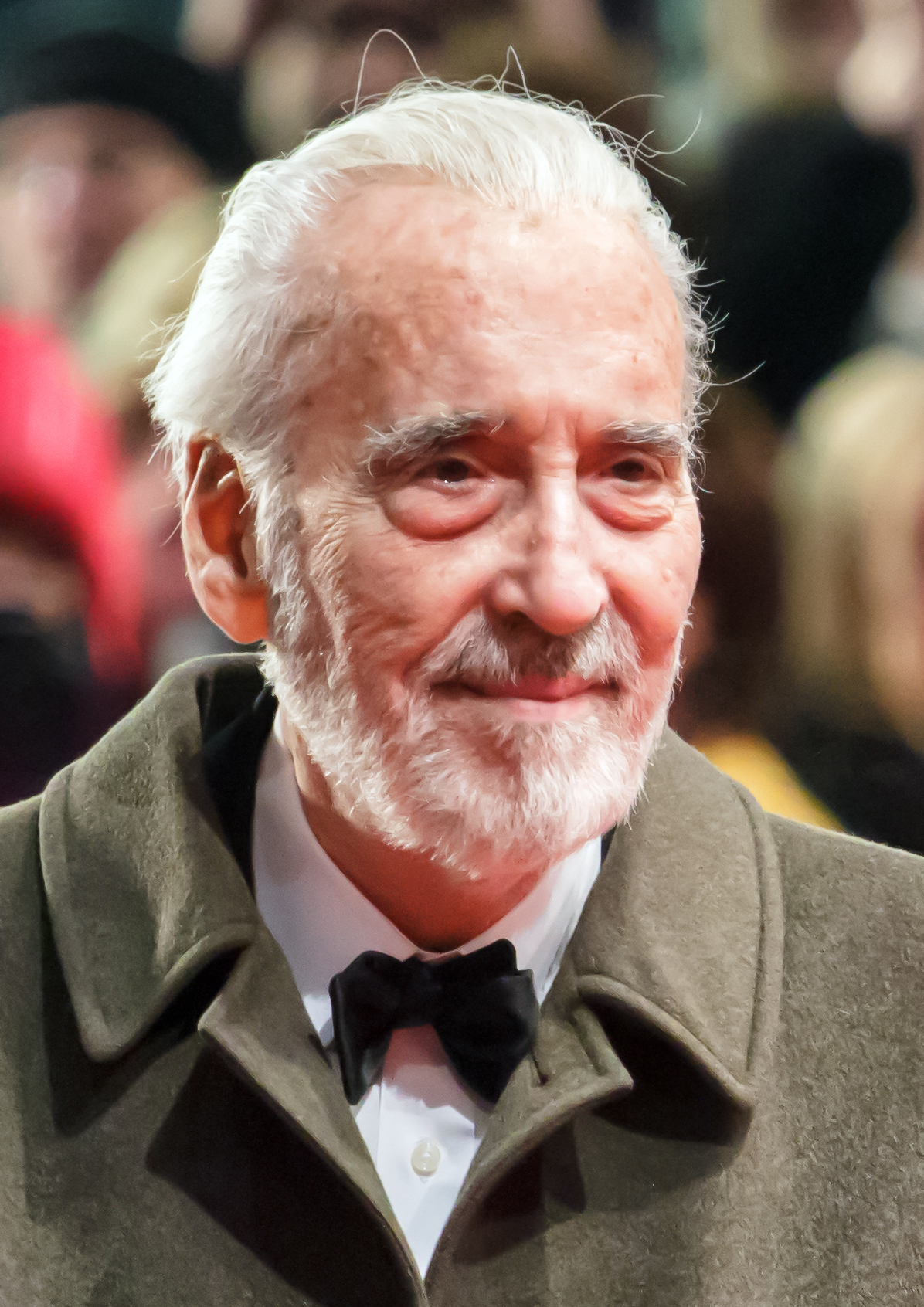
Lee reprised his role as Saruman for The Hobbit prequel trilogy. He expressed a desire to show Saruman's corruption by Sauron, but due to his age, he was unable to travel to New Zealand. The production adjusted to allow him to film his scenes in London. In 2012, Lee had his fifth and final collaboration with Tim Burton, appearing in Burton's film adaptation of the gothic soap opera Dark Shadows in the small role of a New England fishing captain.
In an August 2013 interview, Lee expressed sadness at the prospect of Johnny Depp retiring from acting, stating he had no intention of doing so himself. He acknowledged the frustrations of the film industry, such as dishonesty and incompetence, but emphasized that acting was his life and gave it purpose. He noted his other interests, such as singing and writing, but affirmed that acting kept him going. He was realistic about the amount of work available at his age, accepting voice-overs and narration.
Lee narrated the feature-length documentary Necessary Evil: Super-Villains of DC Comics, released on 25 October 2013. In 2014, he appeared in an episode of the BBC documentary series Timeshift titled How to Be Sherlock Holmes: The Many Faces of a Master Detective, discussing the character and its interpretations with other actors who had played Holmes. He also read an excerpt from the Sherlock Holmes short story The Final Problem in a web exclusive.
A month before his death, Lee had signed on to star with an ensemble cast in the Danish film The 11th. One of his final performances was in the independent fantasy film Angels in Notting Hill, directed by Michael Pakleppa, where he played The Boss / Mr. President. The film premiered in London on 29 October 2016.
3.6. Voice acting
Christopher Lee had a significant career as a voice actor, lending his distinctive voice to a variety of animated films, video games, and audiobooks. He was fluent in English, Italian, French, Spanish, and German, and moderately proficient in Swedish, Russian, and Greek, which enhanced his versatility.
He was the original voice of Thor in the German dubs of the 1986 Danish animated film Valhalla, and of King Haggard in both the English and German dubs of the 1982 animated adaptation of The Last Unicorn. Notably, he provided all the voices for the English dub of Jacques Tati's 1953 film Monsieur Hulot's Holiday.
Lee famously voiced Death in the animated versions of Terry Pratchett's Soul Music and Wyrd Sisters, and later reprised the role in the Sky1 live-action adaptation The Colour of Magic, taking over from the late Ian Richardson.
In video games, he provided the voice for Ansem the Wise/DiZ in Kingdom Hearts II and reprised his role as Saruman in The Lord of the Rings: The Battle for Middle-earth. He also voiced Francisco Scaramanga in the video game GoldenEye: Rogue Agent, thirty years after playing the character in the James Bond film. In 2014, at 91 years and 316 days old, he narrated the Lego The Hobbit video game, earning him a Guinness World Records title as the oldest video game narrator.
For audiobooks, Lee narrated J. R. R. Tolkien's The Children of Húrin in 2007. He also performed for The Tolkien Ensemble's album At Dawn in Rivendell in 2003, taking on roles such as Treebeard and King Théoden for readings and songs. In 2013, he voiced The Earl of Earl's Court in the BBC Radio 4 radio play Neverwhere by Neil Gaiman.
4. Music career
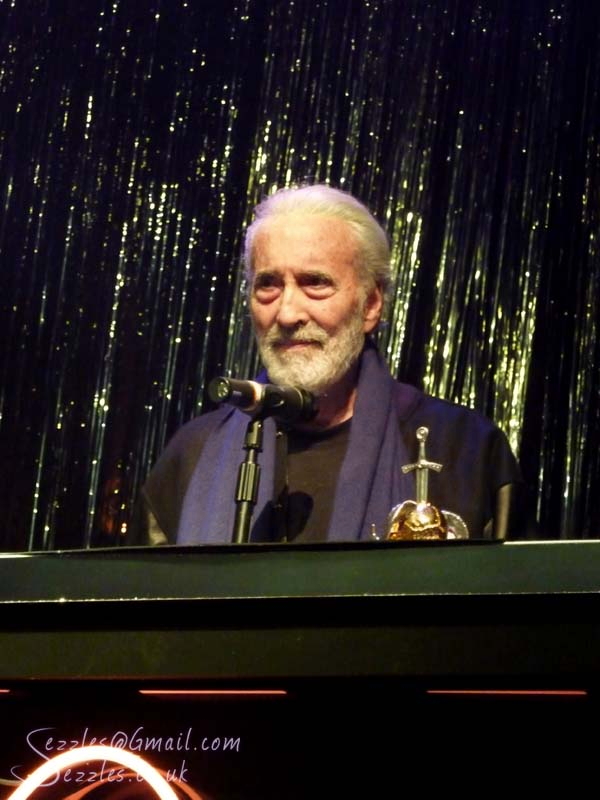
Beyond his acting career, Christopher Lee pursued a parallel path as a singer and recording artist, utilizing his operatic bass voice. He sang on The Wicker Man soundtrack (1973), performing Paul Giovanni's composition, "The Tinker of Rye." In 1977, he appeared on Peter Knight and Bob Johnson's (from Steeleye Span) concept album The King of Elfland's Daughter. He also sang the closing credits song for the 1994 horror film Funny Man.
Lee's venture into heavy metal music began with a duet with Fabio Lione, lead vocalist of the Italian symphonic power metal band Rhapsody of Fire, on the single "The Magic of the Wizard's Dream" from their 2004 album Symphony of Enchanted Lands II - The Dark Secret, though he only provided backing vocals on the album version. He subsequently appeared as a narrator and backing vocalist on four more of the band's albums: Symphony of Enchanted Lands II - The Dark Secret, Triumph or Agony, The Frozen Tears of Angels, and From Chaos to Eternity, as well as on the EP The Cold Embrace of Fear - A Dark Romantic Symphony, portraying the Wizard King. He also collaborated with Manowar, recording narration for a new version of their first album, Battle Hymns, a role originally performed by Orson Welles.
His heavy metal album, Charlemagne: By the Sword and the Cross, was released in 2010, followed by Charlemagne: The Omens of Death in 2013, released on his 91st birthday. He was honored with the "Spirit of Hammer" award at the 2010 Metal Hammer Golden Gods Awards ceremony for his contributions to the metal genre.
Lee also achieved chart success with his music. With the song "Jingle Hell," a heavy metal take on "Jingle Bells," he entered the Billboard Hot Singles Sales chart at No. 22 in December 2013, becoming the second oldest living performer to enter the music charts at 91 years and 6 months. After gaining media attention, the song rose to No. 18, making him the oldest person to have a top 20 hit.
In May 2014, to celebrate his 92nd birthday, Lee released a third EP of covers titled Metal Knight. This EP included a cover of "My Way," "The Toreador March" (inspired by the opera Carmen), and the songs "The Impossible Dream" and "I, Don Quixote" from the Man of La Mancha musical. Lee stated his inspiration for recording the latter songs was that "as far as I am concerned, Don Quixote is the most metal fictional character that I know." His fourth EP and third annual Christmas release, "Darkest Carols, Faithful Sing" (a playful take on "Hark! The Herald Angels Sing"), followed in December 2014. He explained that at his age, staying active with enjoyable activities was paramount, viewing "every day as a celebration" he wished to share with his fans.
Lee's final appearance on a musical record was as a narrator on "The Last Vampire," a track from the 2015 self-titled debut album by Hollywood Vampires, a supergroup featuring Johnny Depp, Alice Cooper, and Joe Perry. In 2019, Rhapsody of Fire included a posthumous narration by Lee on their album The Eighth Mountain, where he narrated the concept story of the band's Nephilim Empire Saga.
4.1. Albums and EPs
Christopher Lee released several studio albums and extended plays throughout his music career:
- Christopher Lee Sings Devils, Rogues & Other Villains (1998)
- Revelation (2006)
- Charlemagne: By the Sword and the Cross (2010)
- Charlemagne: The Omens of Death (2013)
His EPs include:
- A Heavy Metal Christmas (2012)
- A Heavy Metal Christmas Too (2013)
- Metal Knight (2014)
4.2. Singles
Lee released several singles, notably:
- "Let Legend Mark Me as the King" (2012)
- "The Ultimate Sacrifice" (2012)
- "Jingle Hell" (2013): This single reached number 18 on the Billboard Hot Singles Sales chart, making him the oldest person to have a top 20 hit at 91 years and 6 months.
- "Darkest Carols, Faithful Sing" (2014)
4.3. Collaborations
Christopher Lee collaborated with various bands and artists, particularly within the heavy metal genre:
- Rhapsody of Fire**: He appeared as a narrator and backing vocalist on several albums, including Symphony of Enchanted Lands II - The Dark Secret (2004), Triumph or Agony (2006), The Frozen Tears of Angels (2010), The Cold Embrace of Fear - A Dark Romantic Symphony (2010), From Chaos to Eternity (2011), and posthumously on The Eighth Mountain (2019).
- Manowar**: He contributed narration to their album Battle Hymns MMXI (2010).
- Hollywood Vampires**: He was featured as a narrator on the track "The Last Vampire" from their self-titled debut album (2015), marking his final musical appearance.
- The Tolkien Ensemble**: He narrated and sang for their album At Dawn in Rivendell (2003).
- Peter Knight and Bob Johnson**: He appeared on their concept album The King of Elfland's Daughter (1977).
He also contributed to various other projects, including the soundtrack for The Wicker Man (1973), and provided readings for "The Raven" and sang "Elenore" for the Edgar Allan Poe Projekt - Visionen (2006).
5. Personal life
Christopher Lee's private life was characterized by enduring relationships, a distinctive physical presence, and a blend of traditional beliefs with an interest in the esoteric.
5.1. Family and relationships
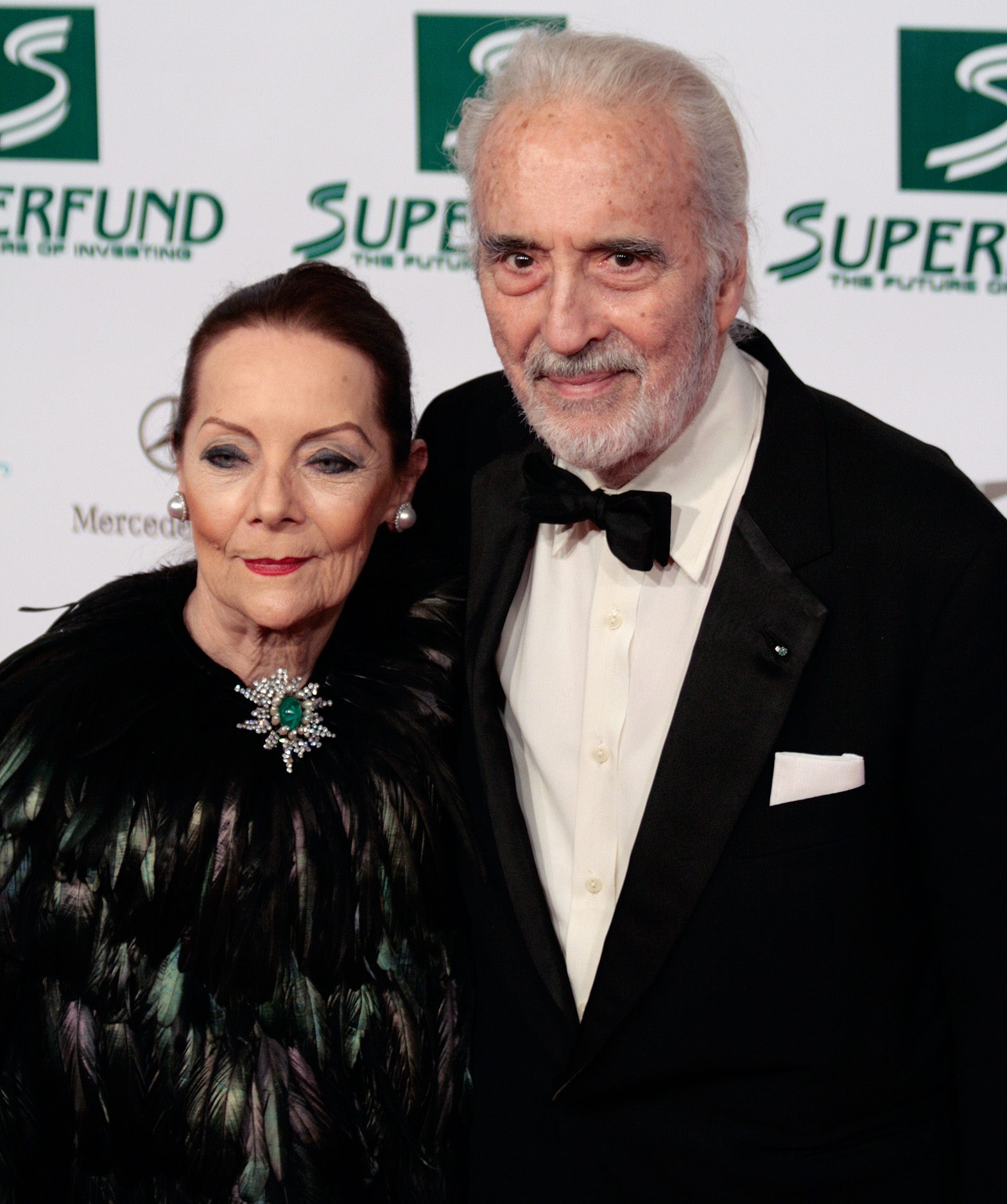
Christopher Lee's maternal ancestors, the Carandinis, were granted the right to bear the coat of arms of the Holy Roman Empire by Emperor Frederick Barbarossa.
In the late 1950s, Lee was engaged to Countess Henriette Ewa Agnes von Rosen, whom he met in Stockholm. Her father, Count Fritz von Rosen, was demanding, delaying the wedding, having friends interview Lee, hiring private detectives, and requiring references from Lee, which he obtained from Douglas Fairbanks Jr., John Boulting, and Joe Jackson. Lee found meeting her extended family surreal. He even needed permission from the King of Sweden to marry, which he had received years prior during filming Tales of Hans Anderson. However, Lee ended the engagement shortly before the wedding, concerned that his financial insecurity as an actor meant she "deserved better." She understood, and the wedding was called off.
Lee was introduced to Danish painter and former model Birgit "Gitte" Krøncke (1935-2024) by a Danish friend in 1960. They became engaged soon after and married on 17 March 1961. They had one daughter, Christina Erika Carandini Lee (born 1963). Lee was also the uncle of British actress Harriet Walter. Both Lee and his daughter Christina provided spoken vocals on Rhapsody of Fire's album From Chaos to Eternity.
In the 1970s, Lee relocated to Los Angeles, disillusioned with the film roles he was being offered in Britain, stating that in Hollywood, he was "no longer a horror star. I was an actor." He later moved back to England and lived with his family in Cadogan Square in west London until his death.
5.2. Beliefs and characteristics
Christopher Lee was widely recognized for his imposing height, often cited as 6 in. On BBC Radio's Test Match Special in 1987, Lee described himself as being 6 in. Lee and his wife Birgit were included among the fifty best-dressed over 50s by The Guardian in March 2013.
Lee was an Anglo-Catholic Christian. After World War II, he served as an altar server at St Stephen's Church in South Kensington, London, during T. S. Eliot's time as a parishioner there. Politically, Lee supported the Conservative Party. Regarding Islam, he stated that Islamic terrorism "is not the true Islam."
Lee had a notable interest in the occult, to which he was introduced by Dennis Wheatley. While it was once erroneously reported that he possessed a library of 20,000 occult books, Lee clarified during a talk at University College Dublin that this was false, joking, "I don't-I'd have to live in a bath!" He strongly cautioned his audience against engaging in occult practices, stating, "I have met people who claim to be Satanists, who claim to be involved with black magic, who claimed that they not only knew a lot about it. But as I said, I certainly have not been involved and I warn all of you: never, never, never. You will not only lose your mind: you lose your soul."
6. Death
Christopher Lee died at the Chelsea and Westminster Hospital on 7 June 2015, at the age of 93. The cause of death was heart failure, following respiratory problems. His wife, Birgit Krøncke, delayed the public announcement until 11 June, ensuring his family was informed before releasing the news to the press.
Following Lee's death, fans, friends, actors, directors, and other figures in the film industry publicly offered their tributes. Then-Prime Minister David Cameron praised Lee as a "titan of the golden age of cinema." Lee was honored by the academy at the 88th Academy Awards on 28 February 2016, in the annual In Memoriam section.
7. Honours and legacy
Christopher Lee received numerous accolades and recognitions throughout his illustrious career, leaving a significant and enduring impact on cinema, music, and popular culture.
7.1. Awards and recognition
Lee was the subject of the BBC's This Is Your Life in 1974. In 1994, he received the Bram Stoker Award for Lifetime Achievement for his profound influence on the horror genre. He was appointed a Commander of the Venerable Order of Saint John in 1997. As part of the Queen's Birthday Honours in 2001, Lee was appointed a Commander of the Order of the British Empire (CBE) "for services to Drama." He was made a Knight Bachelor "For services to Drama and to Charity" on 13 June 2009, as part of the Queen's Birthday Honours. The French government honored him as a Commander of Ordre des Arts et des Lettres in 2011.
In 2005, a USA Today newspaper poll named Lee the "most marketable star in the world" after three of his films grossed 640.00 M USD. In 2010, he was identified as the IMDb member with the greatest closeness centrality, indicating he was the most well-connected person in the entertainment industry.
In 2008, Lee, in his role as Count Dracula, was featured on a commemorative UK postage stamp issued by the Royal Mail to mark 50 years since the release of Hammer Films' Dracula (1958). In 2010, he received the Spirit of Hammer award at the Metal Hammer Golden Gods Awards for his contributions to the metal genre. In 2011, Lee was awarded a BAFTA Fellowship, and he received a BFI Fellowship in 2013.
In 2011, accompanied by his wife Birgit, and on the 164th anniversary of Bram Stoker's birth, Lee was honored with a tribute by University College Dublin. He described his honorary life membership of the UCD Law Society as "in some ways as special as the Oscars." He was also awarded the Bram Stoker Gold Medal by the Trinity College Philosophical Society, of which Stoker had been president, and received a copy of Collected Ghost Stories of MR James from Trinity College's School of English.
7.2. Influence and impact
Christopher Lee's influence on cinema, particularly the horror genre, is profound and enduring. His portrayal of Count Dracula in the Hammer films set a new standard for the character, imbuing him with a dark sexuality and aristocratic menace that redefined the vampire archetype for generations. This iconic performance solidified his status as a horror legend, often alongside his close friend and frequent co-star, Peter Cushing. Their collaborations are celebrated as a cornerstone of post-World War II horror cinema.
Beyond horror, Lee's versatility allowed him to transcend typecasting, even as he was known for his memorable villainous roles. His commanding presence and deep voice made him a sought-after actor for powerful antagonists, from Francisco Scaramanga in the James Bond series to Saruman in The Lord of the Rings and Count Dooku in Star Wars. These roles introduced him to new generations of audiences and cemented his status as a formidable screen presence. His dedication to his craft, continuing to act well into his nineties, served as an inspiration to many.
Lee's impact extended beyond acting to his music career, where he pioneered the heavy metal genre for an actor of his stature, demonstrating a passion for music that earned him critical acclaim and a dedicated fanbase within the metal community. His work on albums like Charlemagne showcased his operatic vocal range and historical interests.
His extensive filmography, with over 250 credited roles, earned him a Guinness World Records title for the most film appearances by a living actor at one point. He also held records for the most on-screen deaths and the oldest video game narrator. Christopher Lee's legacy is that of a "titan of the golden age of cinema," a versatile performer who left an indelible mark on various genres and continues to be celebrated for his iconic characters and unwavering commitment to his art.
8. Works
Christopher Lee's creative output spanned various media, including a prolific acting career, authorship, and musical endeavors.
8.1. Filmography
A comprehensive list of all films and television programs in which Christopher Lee appeared is available in his dedicated filmography.
8.2. Books
Christopher Lee authored or edited several books, including autobiographies and anthologies:
- Christopher Lee's X Certificate, London: Star Books, 1975. Also reprinted as Christopher Lee's 'X' Certificate (1976) and From the Archives of Evil (US, 1976).
- Christopher Lee's Archives of Evil, London: Mayflower paperback, 1975. Also reprinted as Archives of Evil (1977) and From the Archives of Evil 2 (US, 1976).
- Christopher Lee's Omnibus of Evil, London: Mayflower paperback, 1975. Also reprinted as The Great Villains: An Omnibus of Evil (1978).
- Note: Lee was the 'ghost-editor' on the above series, which was actually edited by anthologist Michel Parry.
- Tall, Dark and Gruesome. (autobiography). London: W. H. Allen, 1977. An expanded and retitled edition was released as Lord of Misrule: The Autobiography of Christopher Lee. London: Orion Books, 2003, with an introduction by Peter Jackson.
8.3. Audiobooks
Christopher Lee provided narration or readings for several notable audiobooks:
- William Peter Blatty: The Exorcist (abridged)
- Agatha Christie: The Hound of Death and Other Stories (unabridged)
- Sir Arthur Conan Doyle: The Adventure of the Lion's Mane and Other Stories (unabridged short stories)
- Sir Arthur Conan Doyle: The Adventure of the Sussex Vampire and Other Stories (unabridged short stories)
- Sir Arthur Conan Doyle: The Case-Book of Sherlock Holmes (unabridged short stories)
- Sir Arthur Conan Doyle: The Valley of Fear (abridged)
- James Herbert: The Fog (abridged)
- Victor Hugo: The Hunchback of Notre Dame (abridged)
- Gaston Leroux: The Phantom of the Opera (abridged)
- Sir Walter Scott: Ivanhoe (abridged)
- Mary Shelley: Frankenstein (abridged)
- Robert Louis Stevenson: Strange Case of Dr Jekyll and Mr Hyde (abridged)
- Bram Stoker: Dracula (abridged)
- J. R. R. Tolkien: The Children of Húrin (unabridged)
- Dennis Wheatley: The Devil Rides Out (unabridged)
- Dennis Wheatley: Strange Conflict (unabridged)
8.4. Discography
Christopher Lee's musical releases include studio albums, EPs, singles, and collaborative projects.
Albums
- Christopher Lee Sings Devils, Rogues & Other Villains (1998)
- Revelation (2006)
- Charlemagne: By the Sword and the Cross (2010)
- Charlemagne: The Omens of Death (2013)
EPs
- A Heavy Metal Christmas (2012)
- A Heavy Metal Christmas Too (2013)
- Metal Knight (2014)
Singles
- "Let Legend Mark Me as the King" (2012)
- "The Ultimate Sacrifice" (2012)
- "Jingle Hell" (2013): This single reached number 18 on the Billboard Hot Singles Sales chart.
- "Darkest Carols, Faithful Sing" (2014)
Collaborations and Guest Appearances
- Rhapsody of Fire**: He appeared as a narrator and backing vocalist on several albums, including Symphony of Enchanted Lands II - The Dark Secret (2004), Triumph or Agony (2006), The Frozen Tears of Angels (2010), The Cold Embrace of Fear - A Dark Romantic Symphony (2010), From Chaos to Eternity (2011), and posthumously on The Eighth Mountain (2019).
- Manowar**: He contributed narration to their album Battle Hymns MMXI (2010).
- Hollywood Vampires**: He was featured as a narrator on the track "The Last Vampire" from their self-titled debut album (2015), marking his final musical appearance.
- The Tolkien Ensemble**: He narrated and sang for their album At Dawn in Rivendell (2003).
- Peter Knight and Bob Johnson**: He appeared on their concept album The King of Elfland's Daughter (1977).
He also contributed to various other projects, including the soundtrack for The Wicker Man (1973), and provided readings for "The Raven" and sang "Elenore" for the Edgar Allan Poe Projekt - Visionen (2006).